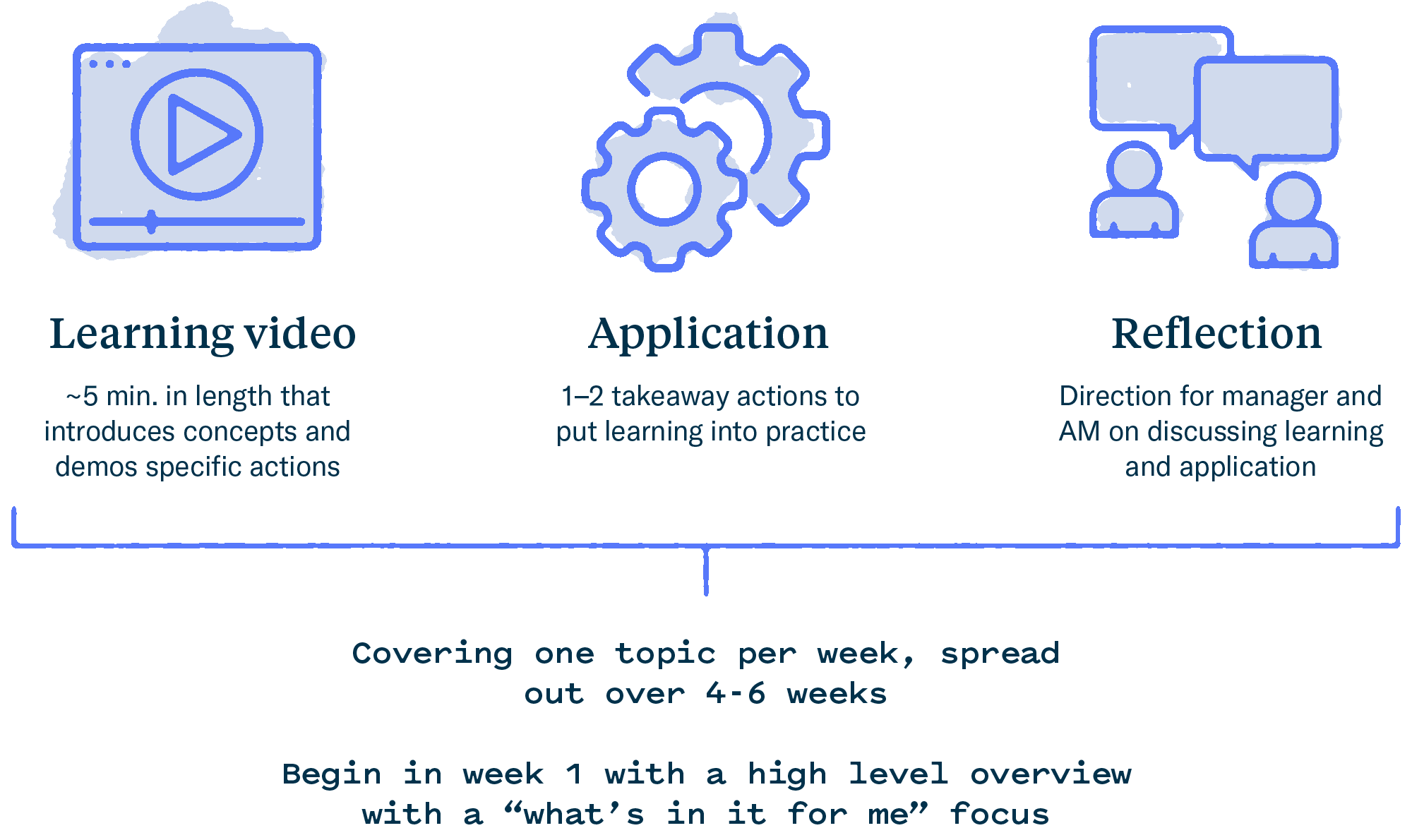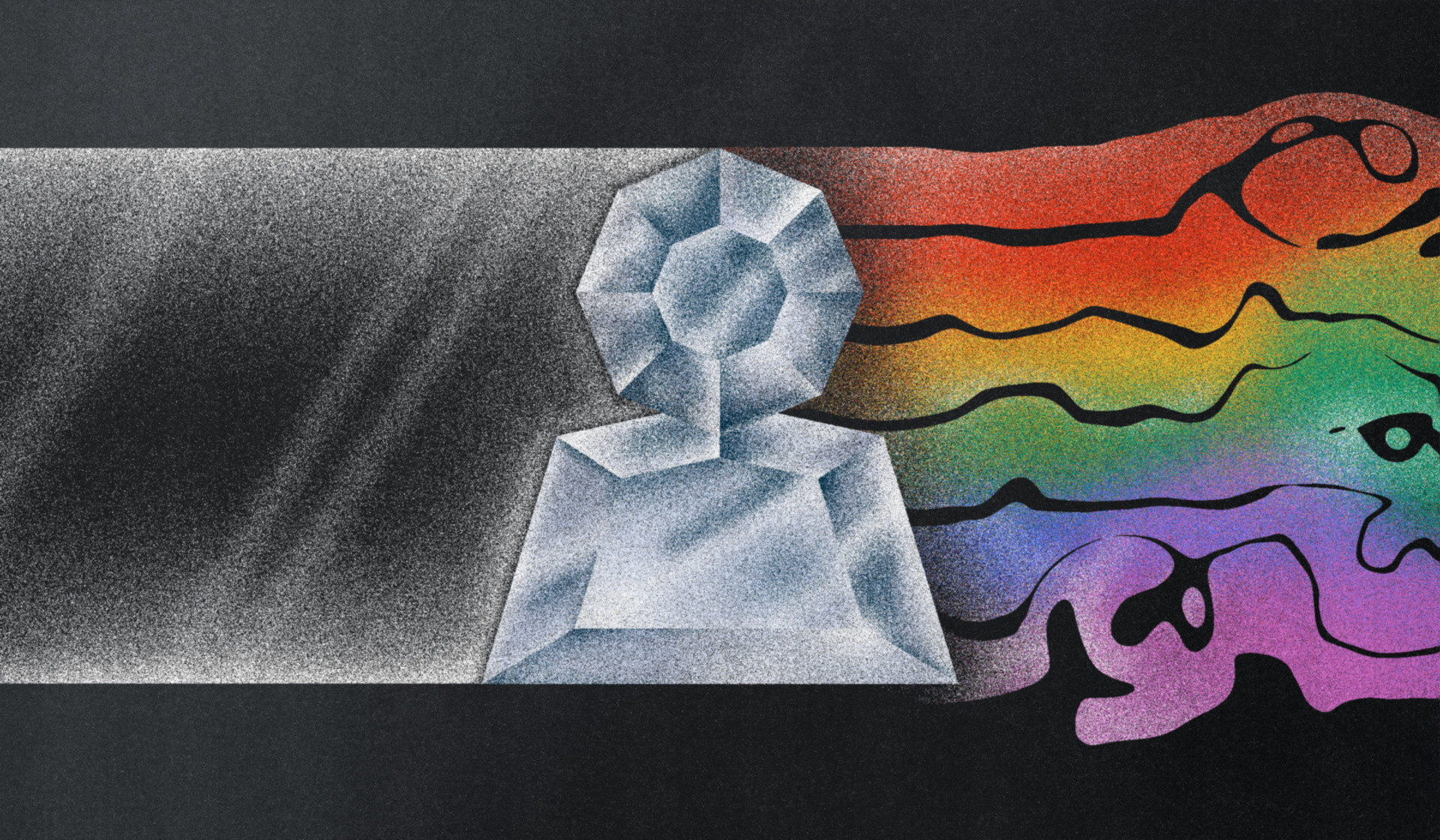Ever feel tempted to skip learner discovery during the design process? We get it. You feel you have a good idea of the problem you’re solving and you’re fired up with ideas on how to get there.
But sometimes the directive of a project doesn’t match up with the actual needs and wants of learners, and that misalignment can impact the success of the project. Through learner research, more time is spent identifying the problem, and then using that to inform the directive. The findings inform the design phase, leading to the best possible solution: a learning experience that drives behavior change.
We recently wrapped up an exciting project with a client and the learner research phase changed the direction of the project for the better. Here’s some inspiration for how to conduct the learner research portion of discovery and why it’s so impactful on the overall effectiveness of a project.
Validating initial assumptions
Johnny’s Markets, a chain of 60+ family-owned Shell gas station convenience stores, cares deeply about creating great experiences for both customers and team members. When you step into a Johnny’s, you can count on friendly service and sparkling clean stores—and it takes a confident, capable staff to pull that off. Johnny’s came to us to create a training program for their managers and shared their ideas on the topics we should cover.
Here’s where we’ve learned to pump the brakes and conduct thorough learner discovery before starting to design a solution. Client direction is a good start, but the next step is to validate assumptions about learners’ needs. That means answering a few important questions. For example, why do managers need to be trained? What challenges are they facing right now? Do the proposed content topics address those challenges?
We knew we could answer those questions and validate our initial thinking by conducting a learning environment analysis, a framework that uses discovery and field research tools to diagnose learner challenges. Here’s how we did it for Johnny’s Markets.
Conducting learner discovery and field research
Our team spent a month engaged in the learner discovery phase. For this project, we visited a Johnny’s store to observe team members in their work environment. We also spent three days conducting field interviews with area managers, store managers, and frontline employees.
As part of the observation phase, we shadowed a store manager to learn how they do their job and what a day-in-the-life is really like. During this step, we always take thorough notes and plenty of photos to refer back to during the design process. We learned a lot here: managers were often juggling managerial responsibilities with frontline, customer-facing tasks. We also observed their learning environment—in this case, the back office—to understand how they access learning and how it fits into their environment.
After having spent a day immersed in a Johnny’s Market store, we started to grasp their cultural lingo and daily routines, all of which helped us refine our questions and use our time more efficiently in the field interviews stage. We then engaged 10–12 team members in one-on-one interviews to ask a series of questions around management mindset, training content, and store context.
Here are a few examples of the questions we asked store managers:
- What does a successful manager at Johnny’s Markets look like?
- Can you measure manager success? If so, what are the outcomes?
- Tell me about a manager’s day-to-day life. What makes it difficult to take a training?
- If you were designing a manager training program, what topics do you think would be important to cover? Why those topics?
Learner research findings
Unsurprisingly, spending time with the learner audience gave our team a deep appreciation for what Johnny’s team members do every day. If a picture is worth a thousand words, first-hand experience is worth a million. We saw for ourselves the spontaneity of the job and the up-and-down nature of their work. It’s often a thankless job, especially during a pandemic.
Building empathy with learners is a critical tool for creating effective learning. You must meet learners where they are and understand their current knowledge, preferences, constraints, and motivations in order to create experiences that resonate.
Take a look at a few key themes and findings from the learner discovery phase:
- Team members are busy and their schedules are unpredictable. They need a training they can easily pick up and put back down.
- Johnny’s team members agree on the traits of a good manager. A good manager is in the trenches, flexible but fair, and can manage conflict.
- Everyone appreciates the culture at Johnny’s. Team members truly love working there and company values aren’t just words, they’re lived.
How learner research impacted the direction of the project
Our findings allowed us to recommend training topics that met learners’ actual needs, versus assumed needs. Together with our partners at Johnny’s, we reworked the initially-proposed topics and recommended a structure for the training program that would fit their schedules and meet their learning needs.
The project is in development now—here’s the direction we’re taking based on our findings during learner discovery.
How to conduct a learning environment analysis (LEA)
In this guide, you’ll find an in-depth overview of an LEA, a powerful framework for accurately diagnosing and defining learners’ problems, constraints, and needs to prescribe the right learning solution. Plus, get worksheets and templates for each stage of the process.
Download your copy→Learning topics that resonate
We synthesized our findings to identify five key training topics, along with an introduction, that reflected learners’ challenges. These topics showed learners they were listened to and that Johnny’s is invested in their growth and development.
Here are the module topics we landed on:
- Introduction
- Leading at Johnny’s
- Building relationships
- Communicating with clarity
- Supporting your team
- Navigating difficult conversations
These modules teach learners transferable, lifelong skills that will serve them anywhere they go. It’s something learners asked for during the discovery phase and helps create immediate learner buy-in so they understand what’s in it for them.
A learning structure focused on behavior change
For this training program, we proposed a structure that takes learners through key phases of the learning process. Covering one topic per week for 4-6 weeks, each module will contain a 5-minute, high-production learning video to introduce the concept (discovery), 1-2 takeaway actions to put learning into practice (application), and an opportunity to debrief with a colleague or leader (reflection).

This structure helps take the guesswork out of learning outcomes and drives behavior change. Instead of simply telling managers what to do and hoping it sticks, this structure guides learners through practicing what they’ve learned. And it’s what the learners asked for: we learned through discovery that this audience appreciates specific examples of how to put a behavior or idea into action.
A focus on culture
Culture is core to Johnny’s and what differentiates it from other convenience stores. We viewed this training as another opportunity to reinforce that culture and create further distance between Johnny’s and the rest of the pack.
Not only that, but Johnny’s culture and values are often a large part of the “why” behind many of the traits of a good manager. We’re infusing culture throughout the training and taking every opportunity to tie the learning back to Johnny’s core values.
Don’t skip learner research
Let’s take a step back and imagine the direction of this project without field research. We would’ve checked a box to deliver content, but it likely wouldn’t have changed behavior. Even worse, we could’ve imposed learning on the audience that caused real damage, resulting in the learners losing trust and feeling misunderstood.
Instead, we’re on our way to creating a learning experience that is almost entirely learner-driven: it reflects their values and their needs, and it even fits their schedules. Bottom line? Don’t skip the learner discovery stage—it can transform a project’s direction and help deliver stronger learning.
Want to dive deeper into the manager training program we created?
Read the full case study to learn how we helped their leaders thrive.
Check it out→